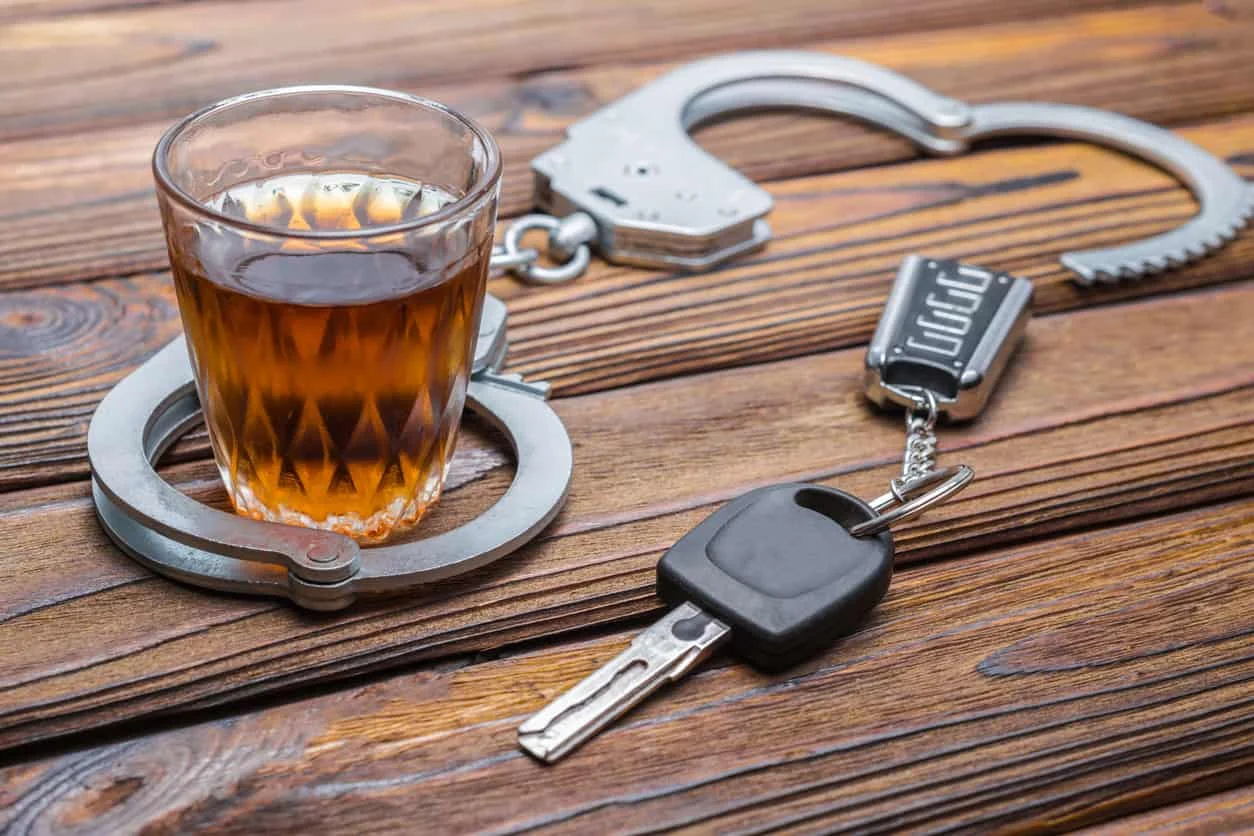Charged With A DUI In Alameda County? Here’s What To Do

California has clear laws and guidelines when it comes to the legal limit of alcohol in your system while driving. These guidelines also affect local DUI enforcement procedures in Alameda County. So, what exactly does this mean if you’re arrested for DUI in Alameda County?
Louis J. Goodman is a former Deputy District Attorney, and he has been practicing criminal law for more than 30 years. Today, he dedicates his time to protecting the rights of those charged with criminal offenses in Alameda County.
If you are charged with a DUI in Alameda County, contact Louis J. Goodman for fair representation and protection of your rights. This guide is tailored to offer legal information and advice for those navigating the complexities of understanding DUIs and BAC levels in California.
Overview of DUI Laws in Alameda County, California

In Alameda County, California, DUI laws are designed to prevent driving under the influence of alcohol by setting a definitive legal limit for blood alcohol concentration (BAC). This limit is a crucial measure to ensure road safety and uphold California DUI laws.
Typically, the BAC level at which an individual is considered legally impaired to drive is 0.08%. However, this threshold is lower for certain groups, like underage drivers and operators of commercial vehicles, reflecting a stringent approach towards drunk driving.
When an officer suspects a driver of DUI in California, they often initiate a BAC test, usually through a breath test, also known as a DUI breath test. Breath tests are commonly employed during traffic stops due to their quick and non-invasive nature.
The DUI breath tests estimate the amount of alcohol in the bloodstream by measuring the alcohol present in one’s breath. If the breath test indicates a blood alcohol level above the legal alcohol limit, or if the officer has other reasons to suspect impairment, a more accurate blood test or, less commonly, a urine test may be conducted.
Possible Consequences of a DUI Charge in Alameda County
For drivers who are arrested for DUI, California’s Vehicle Code outlines potential penalties, which can include suspension of the driver’s license, fines, and even jail time, especially with higher BAC levels or repeated DUI charges.
In Alameda County, those facing a DUI charge may also encounter DUI probation, requiring adherence to specific legal obligations. Additionally, California DUI laws mandate that refusal to submit to a breath or blood test when lawfully requested by a law enforcement officer can lead to immediate penalties, including an automatic suspension of the driver’s license.
BAC Limits in California
It is illegal for you to drive in Alameda County with a BAC level of:
- 0.08% or higher if you are over 21 years old.
- 0.01% or higher if you are under 21 years old.
- 0.01% or higher at any age if you are on DUI probation.
- 0.04% or higher if you drive a vehicle that requires a commercial driver’s license.
- 0.04% or higher if you are driving a passenger for hire.
What You Should Do If Arrested for a DUI in Alameda County
Here’s a detailed step-by-step process you should follow if you’ve been arrested for a DUI in Alameda County, California. This process will ensure that your rights are protected, your evidence is preserved, and you can be fairly represented in court.
- Understand Your Rights Post-Arrest: Post a DUI arrest, you have certain rights under the California Vehicle Code. It’s important to know these rights, especially concerning BAC (Blood Alcohol Concentration) testing and speaking to an attorney.
- Comply with BAC Testing: If a police officer suspects you’ve consumed more alcohol than the legal BAC limit allows to operate a motor vehicle safely, they’ll likely require a blood alcohol test. This can be a breath test at the traffic stop (preliminary alcohol screening) a more formal post-arrest breath test, a blood test, or even a urine test if you have a medical condition like a breathing disorder.
- Preserve Your Test Results: Ensure the blood sample taken for the blood alcohol test is properly stored. You have the right to have your blood sample independently tested later, which is crucial for your DUI case, especially if you suspect that the initial test wasn’t properly administered.
- Document Everything: Remember as many details as you can about the DUI stop and arrest. How many drinks you had, what type (alcoholic beverage), and over what period? Note down the police officer’s actions and words during the DUI stop. If you’re on any prescription medications, list them as they can affect BAC measurements.
- Seek Legal Representation: Arrange for a free consultation with a lawyer specializing in California DUI cases. They can help interpret BAC levels, advise on defense strategies, and represent you in court. Work closely with your attorney to gather evidence, prepare for your court appearance, and understand the specifics of the California vehicle code as it applies to your DUI case.
Summary of DUI in Alameda County
As a state, California has stringent drunk driving regulations that can make it a little complicated to understand your position when arrested. Having a legal partner who will not only represent you but also help you understand the laws and provide the best option for your defense can be vital for having a favorable outcome.
Louis J. Goodman is a former Deputy District Attorney and has 30 years of experience in handling criminal cases. He is now a criminal defense lawyer ready to represent you in court. Although the legal process in the Golden State laws might make your case seem daunting, an experienced legal professional can help you navigate it and have a positive outcome for your case. In case of a DUI charge in Alameda County, contact Louis J. Goodman today.
Frequently Asked Questions about California DUI Alcohol Level
What are the new DUI Laws in California?
In California, it is illegal to drive a vehicle if you have a blood alcohol concentration (BAC) level of 0.08% and you are over 21 years old. If you are under 21 years old, you can be arrested if your BAC level is over 0.01% and you are operating a car. If you have a previous DUI conviction, it is illegal to drive with a BAC level of over 0.01%.
What is the penalty for a first DUI in California?
The penalty for a first DUI (Driving Under the Influence) conviction can vary depending on the specifics of the case, but generally includes both administrative and criminal penalties. Typically, a first DUI offense involves a fine, which can range from $390 to $1,000, plus substantial penalty assessments.
Additionally, there may be a jail sentence ranging from 48 hours to 6 months. Offenders are often required to attend a DUI school for a period ranging from 30 hours to 9 months, depending on the blood alcohol content (BAC) at the time of arrest.
There’s also a license suspension period, which can last from 6 months to a year. An offender might be able to get a restricted license to drive to work or DUI classes after a certain period. In some cases, the installation of an ignition interlock device (IID) in the vehicle may be required. These penalties aim to educate offenders about safe California driving practices and the dangers of DUI.
What does 0.08 mean on a breathalyzer?

A 0.08 reading on a breathalyzer test indicates a blood alcohol content (BAC) of 0.08% or 80 milligrams of alcohol per 100 milliliters of blood. In California, as in all other U.S. states, a BAC level of 0.08% is the legal limit for driving under the influence for drivers 21 years and older operating non-commercial vehicles.
This means that if a breathalyzer, which is a form of a chemical test, reads 0.08 or higher, the police officer has sufficient evidence to arrest the individual for DUI. This BAC level is established because it’s believed that most individuals with this amount of alcohol in their system are too impaired to safely operate a motor vehicle.
What happens if you get 3 DUIs in California?
Receiving a third DUI offense in California within 10 years significantly increases the severity of the penalties. The fines and assessments can be quite hefty, potentially ranging into thousands of dollars. Jail time becomes more likely, with a minimum of 120 days and up to one year.
Additionally, the offender faces a license suspension for up to 3 years and is usually required to enroll in a 30-month DUI school. An ignition interlock device (IID) will also likely be required in the offender’s vehicle. A third DUI in California is still usually a misdemeanor unless aggravated factors are present, but the punishment reflects the increased seriousness of repeated offenses.
How many DUI’s is a felony in California?
In California, a DUI can become a felony under several circumstances. The most straightforward is if an individual is convicted of a fourth DUI offense within 10 years; this is automatically classified as a felony.
Additionally, any DUI offense can be charged as a felony if it involves bodily injury to someone other than the driver, or if the individual has a prior felony DUI conviction. The distinction between a misdemeanor and a felony DUI is significant, with felony charges carrying more severe penalties, including longer prison sentences, higher fines, and more extensive DUI programs.
How many drinks is 0.08 for a man?
This usually depends on the type of alcohol. Some drinks have higher alcohol concentrations than others. But the general rule is that for every drink you take, your BAC level goes up by 0.02%. So, to reach the 0.08 BAC level, you’d typically have to take between 4 to 5 drinks.
Request A Free Case Evaluation
Fields marked with an * are required
"*" indicates required fields



